A worm composter, or wormery, can turn your kitchen food scraps into fantastic fertiliser for your house plants and garden.
Compact, smell-free and faster than normal composting, a wormery harnesses the digestive capability of worms to turn rotting vegetable matter into nutrient-rich material for your plants.
Your wormery will provide you with a rich compost and a brown liquid, or 'worm tea', that you can dilute and use as a liquid fertiliser.
Only certain species of worms will thrive in a worm composter, so it's best to purchase the correct types or obtain them from someone with an established wormery.
Watch the video above to find out how to make your worm composter. Below, you can find the full instructions and some tips for success.
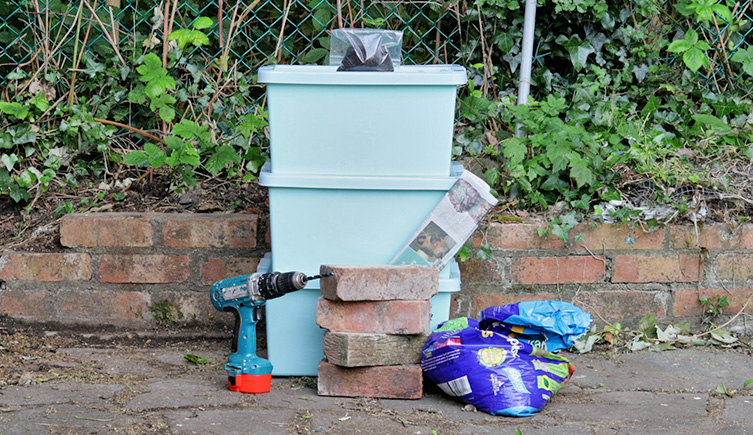
For your wormery you will need:
- Three stacking boxes (40 x 50 x 20cm), including one lid
- Four bricks
- Newspaper
- Peat-free compost (peat-free compost will be clearly marked as such)
- Composting worms (see What worms do I use in a wormery?)
- A drill
1. Build your wormery
Take two of the boxes and drill lots of holes through their bottoms and a modest number of holes through their sides. These let air circulate through the boxes and allow the worms to migrate between boxes. They also let the fertiliser fluid drain into the bottom box.
Place the third box in a shaded area and place two bricks in the bottom.
Stack one of the other boxes inside this one, then place the other two bricks inside it.
Stack the final box on top, without any bricks.
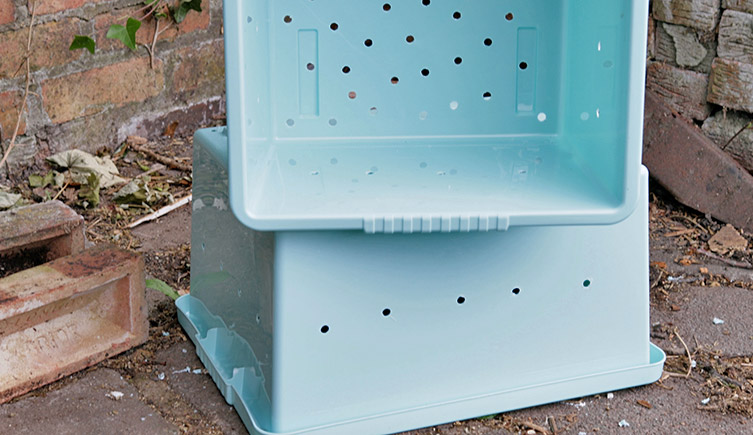
For two of the boxes, ensure you drill holes in the bottom and around the sides
2. Fill your wormery
Line the top box with newspaper and add three centimetres of damp compost.
Add the worms and a little more compost.
Cover with newspaper and put the lid on the top box.
Leave for one week for the worms to settle in.
3. Making compost in your wormery
You can now start feeding the worms your food scraps.
Suitable food waste includes tea bags (plastic-free ones), banana skins, vegetable peelings, coffee grounds and eggshells.
Don't add too much citrus, garlic or onions.
Do not add meat or dairy waste.
You can also add shredded newspaper or cardboard, which can help to maintain the correct moisture level.
Once the top box is full, switch with the middle box and add food to the empty top box. The worms will slowly move up into the new box. Adding a little compost from the full box can help encourage the worms to move.
Once the worms have migrated out of the box you can empty the compost onto your garden.
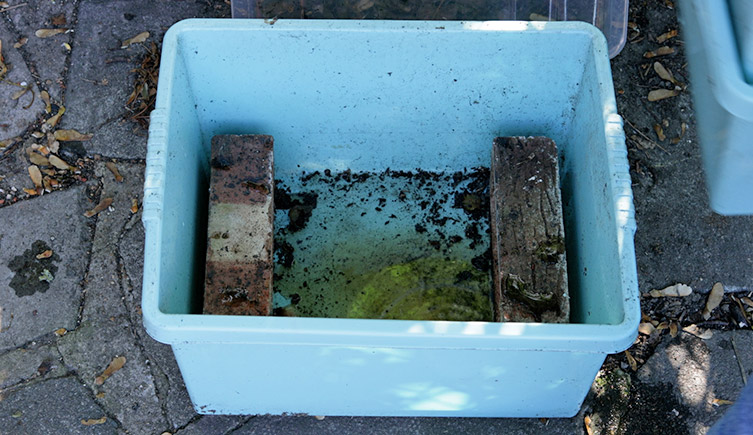
'Worm tea' fertiliser liquid will collect in the bottom box
Regularly empty out any liquid from the bottom box. Dilute this with ten parts of water to use as a fertiliser.
You can keep the process going forever: feeding your worms, rotating your boxes and emptying the compost and fertiliser liquid.
What worms do I use in a wormery?
The species of worms suitable for a composter aren't the normal garden earthworms that you find living in burrows under the soil. Composting worms live on the surface of the soil and specialise in eating decaying vegetable matter.
It's probably easiest to buy the worms you need from an online supplier. Shops that sell fishing bait also regularly carry the correct species. The most common species sold is Eisenia fetida, which has many common names including tiger worm, red worm, brandling worm and red wriggler. You may also find Dendrobaena veneta, or European nightcrawler.
These worms prefer slightly different conditions, so you may find a mix of both gives you more flexibility in maintaining your wormery.
If you have a friend with an established wormery or compost bin, then they may be able to give you some worms from their colony.
How do composting worms reproduce?
Compost worms are hermaphrodites, which means they have both female and male sex organs. Nevertheless, compost worms usually still need to mate with each other to reproduce. Compost worms breed fast and can double their population every 60-90 days, depending on temperature.
The worms lay their eggsin small, yellow, lemon-shaped cocoons every three to four days, except in winter. One or more young worms emerge from the cocoons around 23 days after they are laid. These worms grow and become sexually mature three to six weeks after hatching.
Eisenia fetida is the faster breeder, each adult producing an average of 12 young per week, whereas Dendrobaena veneta averages two young per week. In wormeries, they can live two to three years but in the wild they only live a year on average.
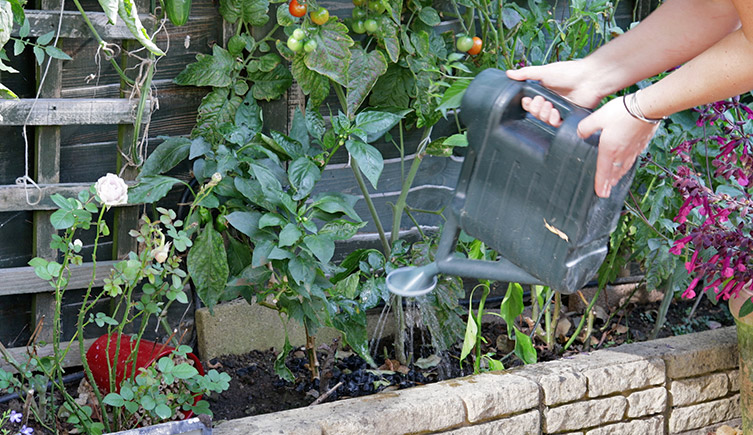
Use the womery compost as a top dressing on your plants, and dilute the juice for a liquid fertiliser
Hints and tips on using maintaining your wormery
Your wormery is a living system that will require a little bit of experimentation to keep it successfully running.
Keep an eye on the mix of kitchen waste that you add to the composter. Composting worms are fairly voracious and can eat up to their own body weight a day, but if you add too much then the worms will not be able to keep up. On the other hand, the worms will be fine for a couple of weeks without food, so you can go away on holiday and not worry about them.
Too much wet waste can make your wormery smelly, while too much dry waste can slow down the composting process. You can add some shredded newspaper or cardboard if you think your mix is getting too wet.
A well-maintained wormery shouldn't smell, and can be kept indoors if required. If put outdoors, consider where you position it, as it needs some protection from the elements. Placing the composter against a wall or fence will help shelter it from too much sun or rain.
You may have to reduce how much waste you add in colder weather. As the temperature decreases, the worms slow down and their activity stops when it falls below 10°C.
In winter, if it gets very cold where you live, you can guard against the worms freezing by wrapping old carpet or bubble wrap around the composter.
Keep the wormery out of direct sunlightas it may get too hot for the worms. A shady north-facing wall is a good position for the summer.
In very wet weather, make sure that the lid is secure, and the boxes aren't flooded with water.

Do your bit for nature
Biodiversity is connected to almost every aspect of our lives, but it needs our help. Small actions can make a big difference.

Protecting our planet
We're working towards a future where both people and the planet thrive.
Hear from scientists studying human impact and change in the natural world.


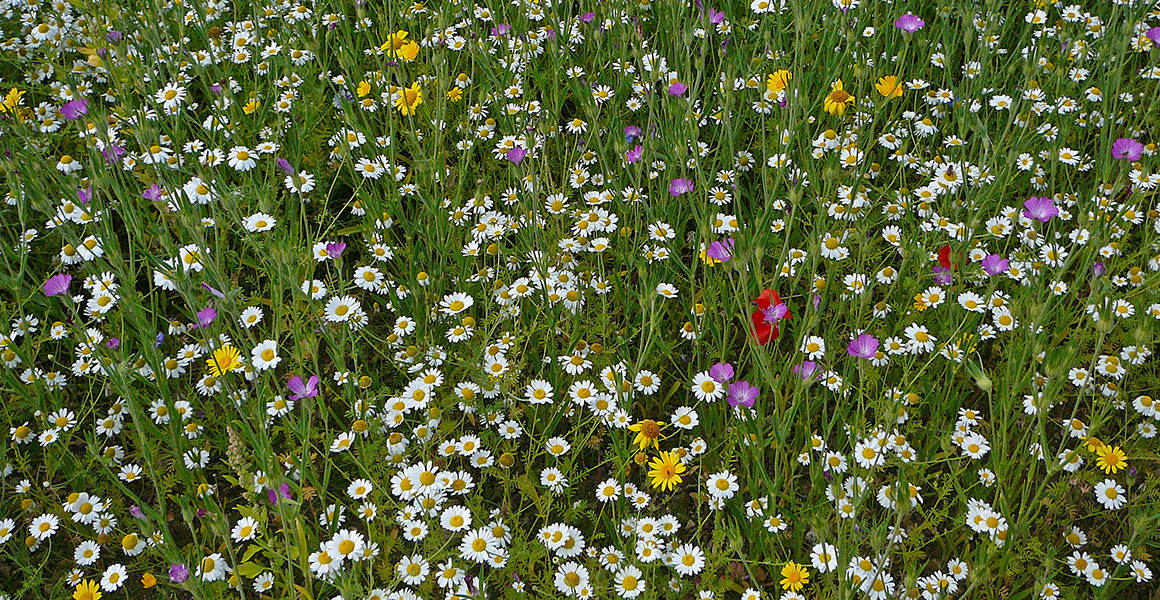

Don't miss a thing
Receive email updates about our news, science, exhibitions, events, products, services and fundraising activities. We may occasionally include third-party content from our corporate partners and other museums. We will not share your personal details with these third parties. You must be over the age of 13. Privacy notice.
Follow us on social media